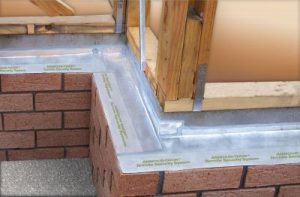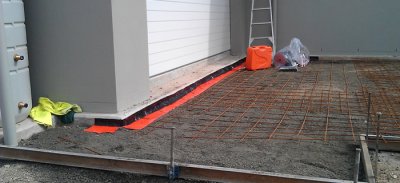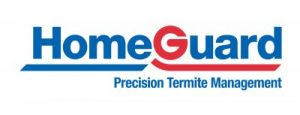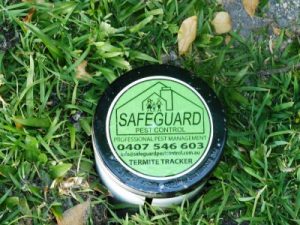
Out of all termite protections that exist, the physical barrier is, possibly, the most primitive, but is has no rivals.
If installed properly, the physical barrier will not let the termites to enter the house for many years, especially if it also is impregnated with chemical termiticide.
So what is this magical remedy?
Hide content
- What is the physical barrier?
- What are the types of physical barrier?
- Plastic barriers impregnated with termicide
- Useful articles
- Helpful video
- Summary
What is the physical barrier?
Physical barrier is a layer of material that is added under the slab, preferably before the house or structure construction. It creates a barrier that is impenetrable for termites and physically stops them from entering your home.This protection will work only on subterranean termites. Those species build their nests in the soil and the foraging workers of the colony come to the structure in their search of cellulose. The colonies of subterranean termites can be as massive as million individuals and in some cases can badly damage the structural timber in three-month time.
Learn more about subterranean termites: signs of their activity; best methods of treatment and DIY methods. Eastern subterranean termites and their tunnels and tubes with photo.
They are attracted to humidity and usually enter the building through the wood, that is in contact with soil, or through the cracks in slab.
Usually they need no more then 1,5 mm gap to squeeze in.
The biggest danger is to have them entering the lower floor of the building or the cellar, damaging the most concealed timber.
If this happens the house owner might not notice the infestation for time long enough to make the damage irreversible.
So, if you can prevent them from entering on the first place, this will save you a lot of money and get a whole load off your shoulders.
Learn more about drywood termites: signs of their activity; best methods of treatment: spot treatment and DIY methods; how to get rid of them in furniture?
What are the types of physical barrier?
Physical termite barrier products can be of two types – non-chemical and chemical. Non chemical barriers that you can find are:
- Sand barrier;
- Basalt barrier;
- Steel mesh barrier.
Sand barrier is not very common on continental US due to its cost and limited availability. The layer of sand added preconstruction under the slabs, piers and utility entry points blocks termites. The grains that are used for this physical barrier should be between 2.0 and 2.8 millimeters.
This way the bigger grains are too heavy for termites to move and the smaller ones fill in the spaces between, not letting the insects to find their way around. For the proper protection, the sand should be distributed in 4-inch-thick, 20-inch-wide layer.
Advice! The best thing would be to combine the sand barrier with chemical soil treatments to ensure the full protection of the structure.
Basalt barrier (BTB) works the same way.
But instead of the sand you going to use small basalt particles, between 1.6 and 2.5 mm in size. This kinds of particle barriers cannot be used in every climate.
If the soil under it tends to expand when wet, it is more likely to create the gaps in the barrier structure and invite termites in. So the soil under the BTB has to be smooth, stable and compact.
One thing the workers that install the sand or basalt particle barrier should take very good care of, is not to contaminate barrier material with dirt, soil and weed roots.
If not cleaned away properly, the roots will grow through the material, destroying the protection. So, it makes good sense to pretreat the soil under the layer of barrier particles from unwanted weed growth.
Stainless steel mesh barrier is another thing, it is not particle barrier, but more of a metal grid that has openings not big enough for termites to squeeze through (normally between 0.44 and 0.66 mm). Metal mesh is also too hard for termites to chew through.
All those barriers are merely a termite shield. They will not let the insects to enter the house undetected. Still, if the protection is compromised, those barriers do not have any chemical power to repel or kill the intruders. This is when chemical barriers integrated into physical system come in handy.
Here you can learn more information about effective termite control remedies: Bora-Care, Boric acid, Borate, Fipronil, Chlorpyrifos, Chlordane, Borax, Timbor, Termidor, Terminator, Phantom, Lorsban, Biflex, Terro. You can choose different forms, such as – foam, liquid, powder.
Plastic barriers impregnated with termicide
Polymer sheeting can serve as a physical barrier itself, sealing up the possible entry holes much like metal mesh barrier, but the endurance of this material depends largely on its thickness and specifics of the polymer.It also helps to create vapor and moisture protection, that is an important feature, because water source is essential for subterranean termites. Big plus of the plastic sheeting is that due to its flexibility it can protect all kind of complicated shapes and designs.
One more feature of polymer is that its structure can be combined with the termicide. This way you get not only the physical barrier, that will keep the termites away, but also a chemical protection, that will repel them, and kill them if termites dare to take a bite of it.
This kind of physical barriers impregnated with insecticide are very popular in Australia, the country that suffers from termites a lot. Plastic barriers are produced there by many reputable trademarks, for example, such major corporations as FMC.
Those barriers, like any other physical protection, have to be installed in the construction period.
It works quite simple – the professional workers underline, wrap and seal in plastic all the possible entry points for the termites and that’s pretty much it.
Normally, the protection system like this includes different thickness and qualities of polymer material.
There are thicker ones, that go under the slab and thinner, that can be used for frames, there’re collars that go around the PVC pipes and granules that fill in any gaps in-between that’s left.
Usually the companies providing this kind of service give a good long warranty on their product. In case of FMC, the expected continuous protection lasts for 50 years and for the first 25 years the manufacturer offers a warranty of million dollars.
Here you can learn more information about termite bait systems: Advance, Green, CSIRO, Nemesis, Exterra, Firstline, Terminate. Also find out how to make baits by yourself and how to refill them?
Of course, this doesn’t come without special conditions – all the manufacturers require that the installation of their barriers was carried out by the pest control operators, that were licensed by them.So, if you install this kind of sheeting, make sure that all the papers are good, and your operator is in the list of the companies certified by system producer, otherwise you will not get the warranty. Another condition is the annual inspection by the professional pest controller.
Useful articles
If you interested in more information of termites we recommend you to read the following articles:
- All types of termites. Are they harmful to humans? Can they bite you? And what is the difference between drywood and subterranean ones?
- What does swarmers of different species look like: drywood, subterranean, formosan?
- Signs of infestation outside and in the house: in walls or furniture.
- How to treat them at home and in the yard: in wood or in fence. How long this process lasts and what is pre-construction and soil treatment?
- What does termite holes look like? What is droppings and is it toxic to humans? Do termites make noises?
- Posible termite damage, how does it look like? Examples of damage in walls and wood floors.
- All about flying termites: how do they look like, swarming season and what to do if there are swarmers in your house?
- How do they do nests and mounds? How to find it in your garden or inside the house?
- Termite life cycle – from egg to larvae. And social hierarchy: workers, soldiers, queen.
- Did you know that termites can infest living trees, for example a palm or a pine tree. They also like to live in stumps.
- You can prevent the infestation by using barriers, such as: HomeGuard, Safeguard, Stainless steel mesh, Kordon.
- If you want to get rid of termites naturally, learn more about such methods as: heat or cold treatment, orange oil, using nematodes.
Helpful video
A presentation about Physical Termite Barriers:
Summary
This was a long and complicated information to digest, so let me go through the main points once again:
- Physical termite barrier systems can be placed at the time of construction or reconstruction of the house.
- It’s a preventive measure, protecting your house from the invasion of subterranean termites.
- Sand and basalt barriers are so-called particle barriers. They cannot be installed on every soil, so, if you prefer to use them – get an advice from the reputable pest control professional in your area.
- Metal mesh is another non-chemical option, it’s made from stainless steel and helps you not to have an undetected infestation.
- Those non-chemical barriers are absolutely eco-friendly ways to protect you house from termites, but they will not give you a 100% guaranteed protection, just make your chances essentially better.
- Plastic polymer impregnated with termiticide is a physical barrier with incorporated chemical protection. This one can repel and kill termites as well as block them.
- Chemically treated polymer barriers come with the warranties from 25 to 50 years and guarantee you will not have subterranean termite problem for all those years.
- All the physical barriers should be installed by professional builders, that have an experience in this area. In case of chemical barrier, the building company has to have a special certification by the system manufacturer.


